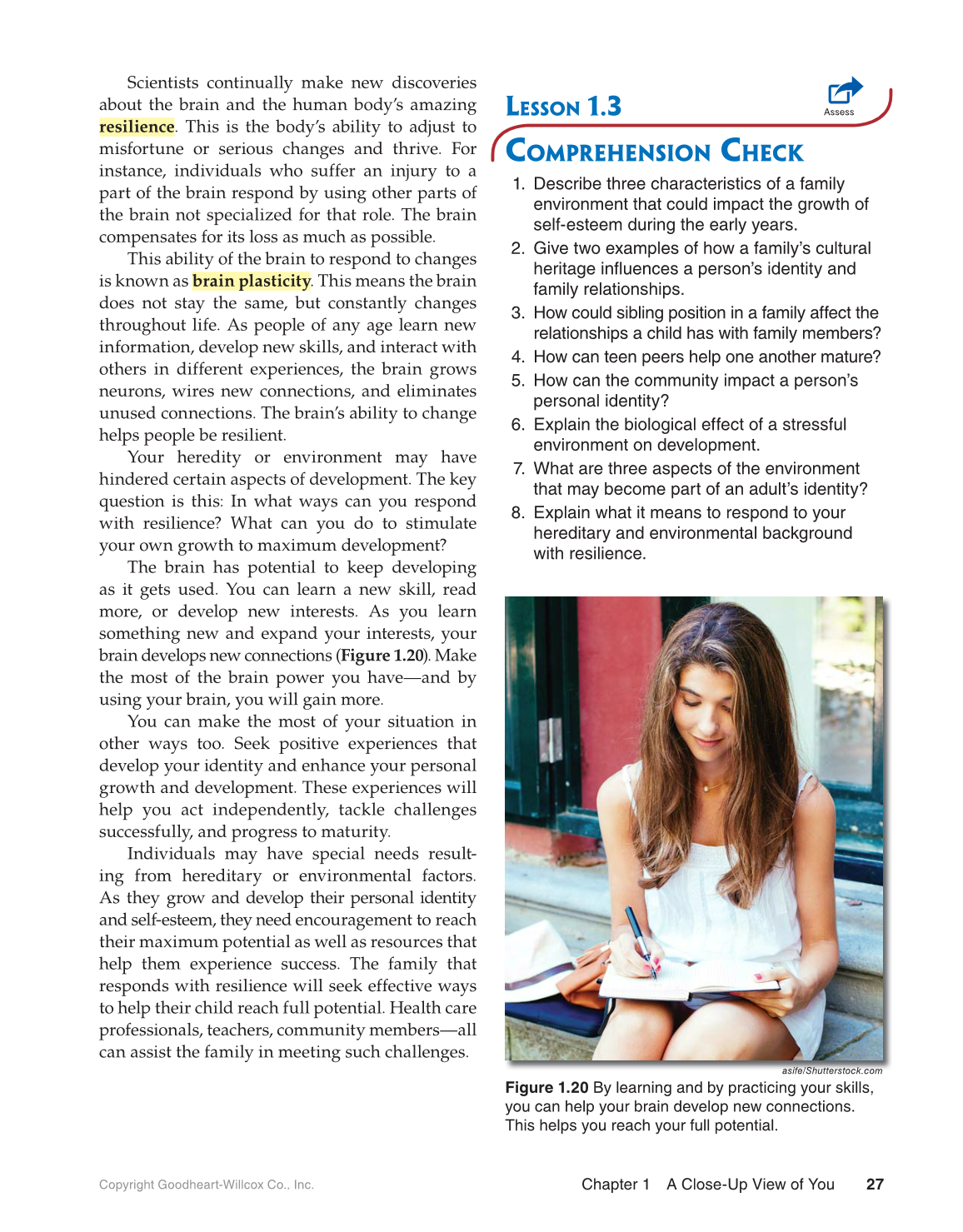Chapter 1 A Close-Up View of You 27
LESSON 1.3
Assess
COMPREHENSION CHECK
1. Describe three characteristics of a family
environment that could impact the growth of
self-esteem during the early years.
2. Give two examples of how a family’s cultural
heritage influences a person’s identity and
family relationships.
3. How could sibling position in a family affect the
relationships a child has with family members?
4. How can teen peers help one another mature?
5. How can the community impact a person’s
personal identity?
6. Explain the biological effect of a stressful
environment on development.
7. What are three aspects of the environment
that may become part of an adult’s identity?
8. Explain what it means to respond to your
hereditary and environmental background
with resilience.
Scientists continually make new discoveries
about the brain and the human body’s amazing
resilience. This is the body’s ability to adjust to
misfortune or serious changes and thrive. For
instance, individuals who suffer an injury to a
part of the brain respond by using other parts of
the brain not specialized for that role. The brain
compensates for its loss as much as possible.
This ability of the brain to respond to changes
is known as brain plasticity. This means the brain
does not stay the same, but constantly changes
throughout life. As people of any age learn new
information, develop new skills, and interact with
others in different experiences, the brain grows
neurons, wires new connections, and eliminates
unused connections. The brain’s ability to change
helps people be resilient.
Your heredity or environment may have
hindered certain aspects of development. The key
question is this: In what ways can you respond
with resilience? What can you do to stimulate
your own growth to maximum development?
The brain has potential to keep developing
as it gets used. You can learn a new skill, read
more, or develop new interests. As you learn
something new and expand your interests, your
brain develops new connections (Figure 1.20). Make
the most of the brain power you have—and by
using your brain, you will gain more.
You can make the most of your situation in
other ways too. Seek positive experiences that
develop your identity and enhance your personal
growth and development. These experiences will
help you act independently, tackle challenges
successfully, and progress to maturity.
Individuals may have special needs result-
ing from hereditary or environmental factors.
As they grow and develop their personal identity
and self-esteem, they need encouragement to reach
their maximum potential as well as resources that
help them experience success. The family that
responds with resilience will seek effective ways
to help their child reach full potential. Health care
professionals, teachers, community members—all
can assist the family in meeting such challenges.
asife/Shutterstock.com
Figure 1.20 By learning and by practicing your skills,
you can help your brain develop new connections.
This helps you reach your full potential.
Copyright Goodheart-Willcox Co., Inc.
